Mouth Breathing: What it does to your face and how to fix it
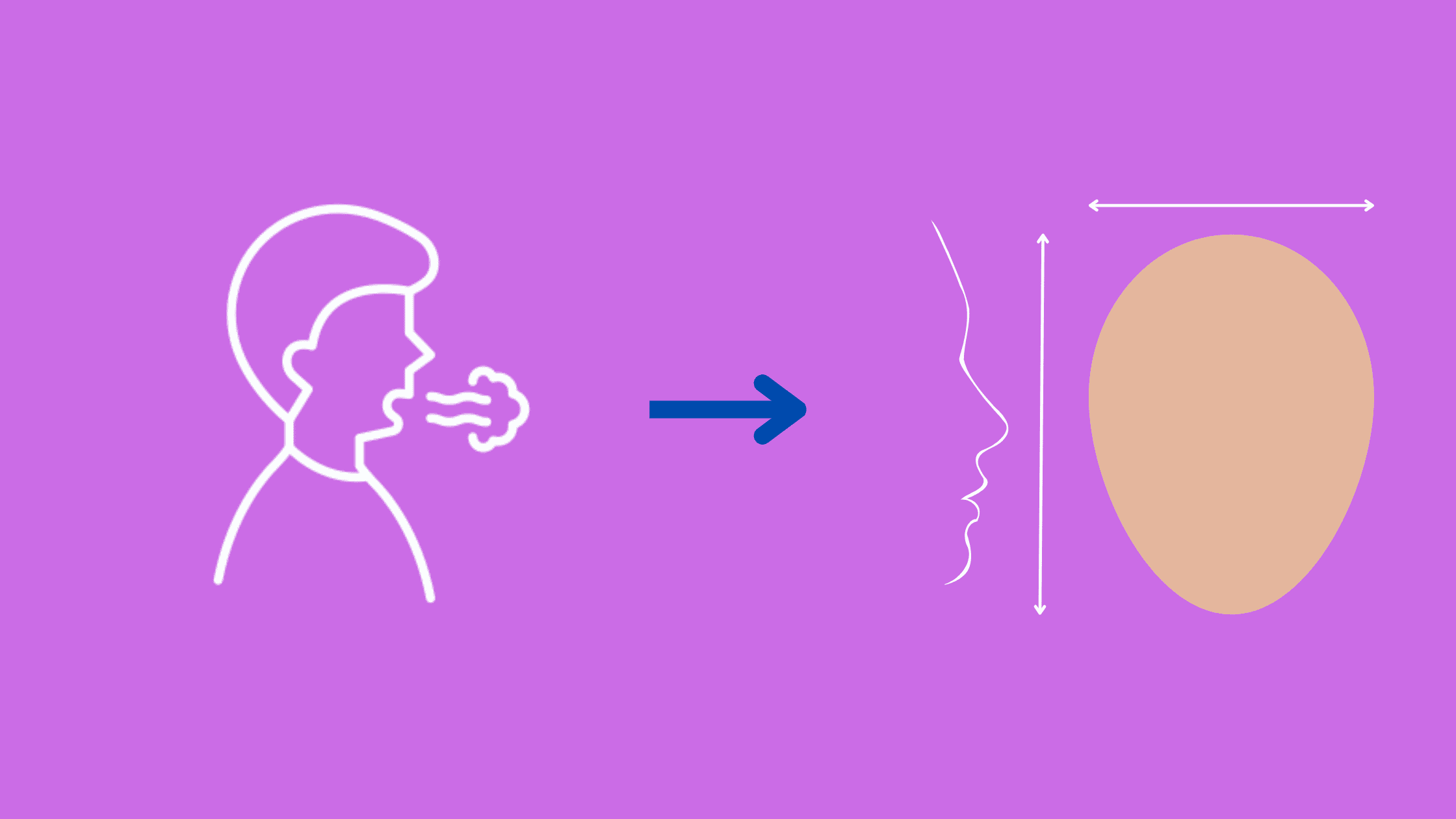
Do you know that?
The average person breathes between 7 and 8 liters of air per minute at rest. That's more than 11,000 liters of air a day.
Normal breathing is only through the nose. Breathing through the mouth may seem normal, but it can be harmful to your oral and general health in the short and long term. The face is the first part of the body to be affected.
In this article:
1. Facial signs that prove you are a mouth breather
2. How is the mouth-breather face fixed?
3. What are the treatment steps for children?
4. What are the treatment steps for adults?
5. How can mouth breathing affect tooth alignment?
6. Other symptoms of mouth breathing
7. Aside from facial appearance, why is nasal breathing so important?
8. Conclusion:
Facial signs that prove you are a mouth breather
Effects of mouth breathing on the face include:
- Inability to close mouth
- Dark circles around the eyes
- Narrowed upper jaw and long face syndrome
- Pinched nose
- Dental alignment issues: Open bite and Crossbite
Another sign is an open mouth. Mouth breathing is usually established in early childhood. When we are used to breathing through the mouth, it becomes a hard habit to break. We do not even recognize it, which makes the situation worse. That is why it is recommended in rehabilitation sessions to practice mindfulness while breathing. It helps to switch to nasal breathing.
Further, breathing has an important role in facial growth, especially on the lower face. You are probably wondering what the connection is.
The tongue is one of the most powerful muscles of the face. It alone contains 17 muscles, so imagine the growth impact it will have.
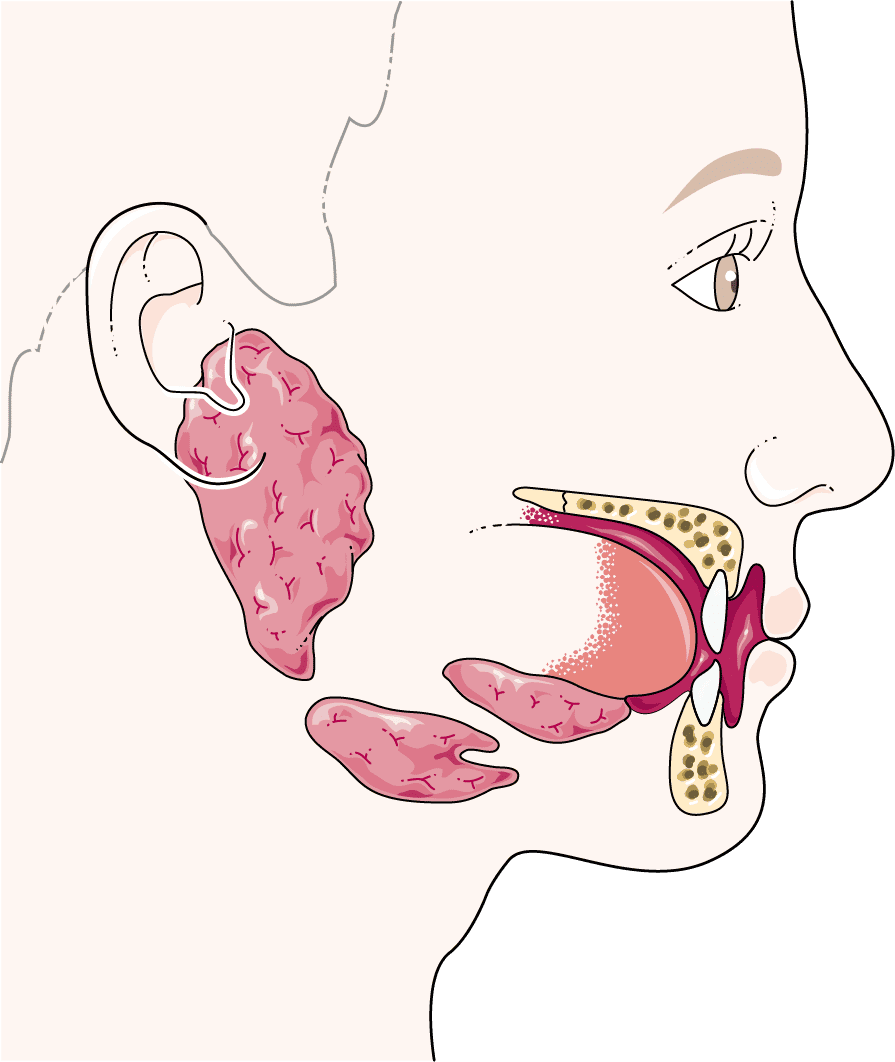
When we breathe through our nose, the tongue is placed behind the upper incisors, on the palate, which will stimulate the growth of the upper jaw. However, when we breathe through the mouth, the tongue is placed in a low position, the upper jaw will not be stimulated and will be narrow, while the lower jaw will grow down and back, resulting in a receding chin and long face syndrome.
The more time passes, the more serious it becomes because the upper jaw will not be wide enough to accommodate the tongue. The upper teeth will not find room either, resulting in crowding.
Also, the nasal cavity and maxillary sinuses will not be stimulated by nasal breathing either, resulting in a pinched nose.
Symptoms of long-face syndrome include:
- Increased height of the lower face.
- The upper jaw is narrow.
- The roof of the mouth is triangular and deep.
- Gingival smile.
- Short upper lip.
- Open lips.
- The upper and lower teeth may not touch when the mouth is closed. This malocclusion is called the open bite.
- Weak jawline and receding chin.
How is the mouth-breather face fixed?
Treatment of mouth breathing and the resulting facial deformities requires a multidisciplinary approach. This involves different medical specialties, including the ENT specialist, the allergist, the rehabilitation specialist, and the orthodontist.The tongue posture is an essential factor in allowing nasal breathing, which in turn promotes harmonious facial growth.
In children, early treatment can restore the correct tongue position to promote nasal breathing and prevent facial deformities from setting in.
If the jaw growth is already affected, orthodontic treatment will use the remaining growth potential to enlarge the upper jaw. Just like a plant that has been leaning as it grows, the sooner the treatment, the better the results.
On the other hand, treatment in adults is different because there is no longer any growth. Dental crowding can be fixed with or without extractions. However, in cases of severe jaw deformities (very long face and very narrow upper jaw), the only solution is jaw surgery.
What are the treatment steps for children?
Changing breathing habits in adulthood is difficult., as they are hard to break, and jaw deformities support the low position of the tongue. That is why it is better to act as early as possible, starting in early childhood.1. Clearing the upper airways:
The first thing to do is to check if there is an obstacle that prevents the child from breathing through its nose. Sometimes allergy treatment or surgery may be needed. These obstacles can include:
- Nasal congestion: This can be due to allergy, sinusitis, deviated septum, or tumor.
- Enlarged adenoids.
- Enlarged tonsils.
2. Stimulating upper jaw growth:
Once the upper airway is clear, early orthodontics can stimulate the growth of the upper jaw. This will allow the upper jaw to expand to accommodate the tongue, promoting nasal breathing and therefore optimal facial growth.
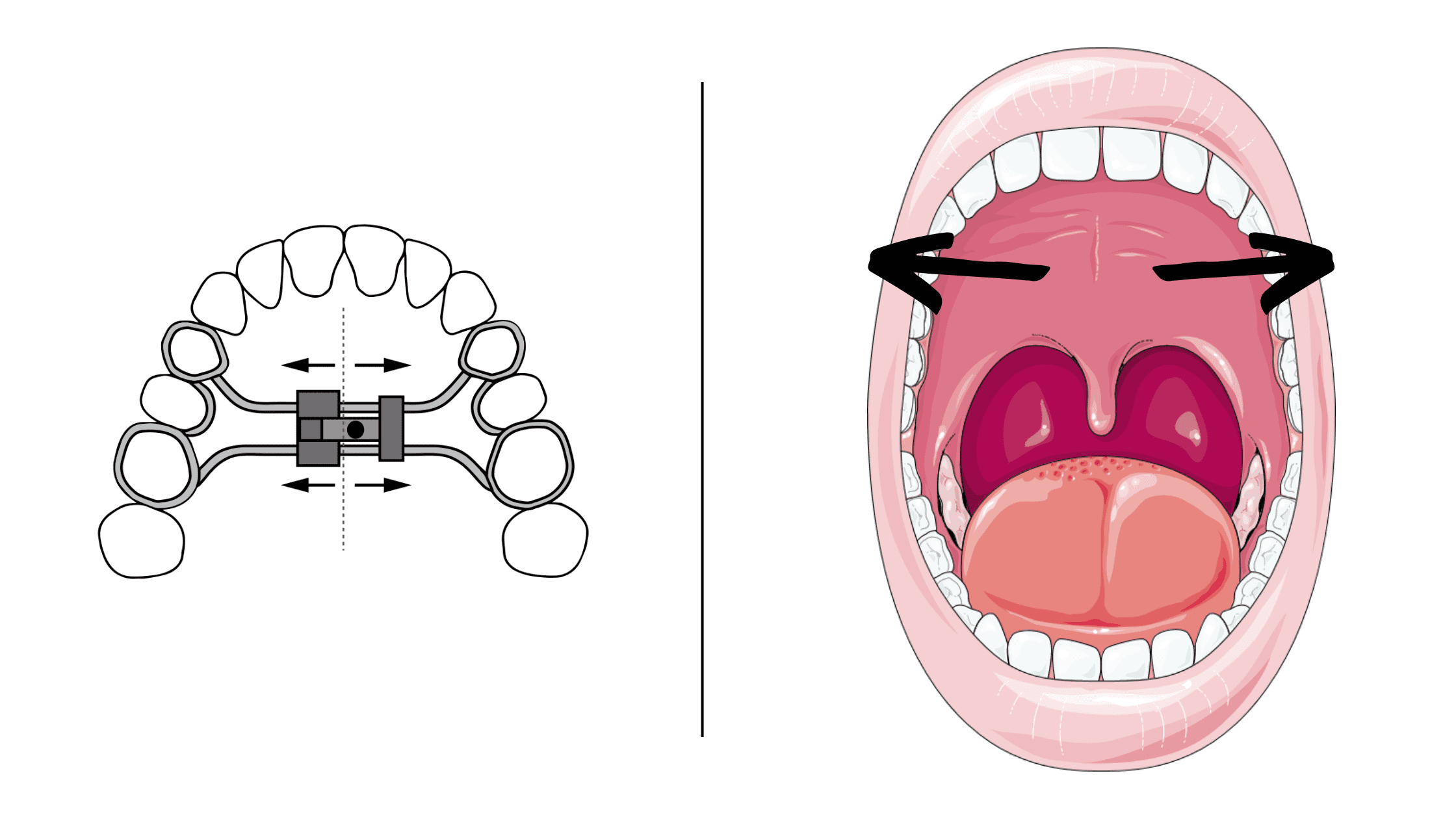
Among the orthodontic appliances used to enlarge the palate (roof of the mouth):
1. Quad Helix
The Quad Helix is a fixed appliance, bonded to the molars with a ring. It is used to widen the palate and restore healthy upper jaw growth. It also creates space for the permanent teeth to emerge evenly. The treatment usually lasts 6 months, but once the results are achieved, the appliance must be left in place to stabilize the results.2. Rapid palate expander
Rapid palatal expansion is a technique that orthodontists use to expand a narrow upper jaw. The "rapid" part of the technique refers to the fact that the expansion happens relatively quickly, typically over a few weeks.The orthodontist attaches a device to the upper molars, which puts gentle pressure on the palate to widen it gradually over time. This device also has a screw in the middle that can be turned regularly to increase the pressure and tension.
When you first get the appliance, it may be uncomfortable for the first couple of days, especially for your tongue. As the teeth start to move, they may feel sensitive to pressure, and you might feel some discomfort or mild to moderate pain when you eat, particularly right after the appliance is activated.
However, this discomfort is temporary and usually goes away after a few days or a week. You'll need some time to get used to the appliance, but it should become more comfortable over time. If you experience discomfort, you can take a pain reliever 30 minutes before meals to help manage the pain.
However, this discomfort is temporary and usually goes away after a few days or a week. You'll need some time to get used to the appliance, but it should become more comfortable over time. If you experience discomfort, you can take a pain reliever 30 minutes before meals to help manage the pain.
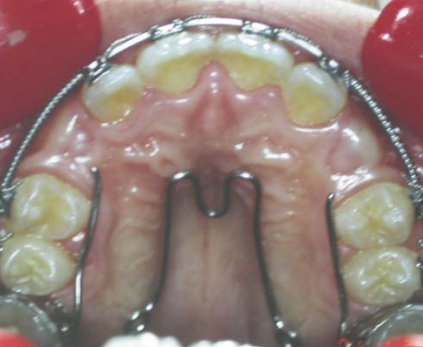
3. Fixing the posture of the tongue:
This is where rehabilitation comes into play. There are different ways to fix the tongue posture in the child, including:- Conscious exercises: Often referred to as myofunctional therapy, it consists of repeating exercises that will train the facial and oral muscles to function correctly. These exercises may involve activities such as swallowing, breathing, and chewing. The primary objective is to replace old harmful habits with new, beneficial ones that support the child's healthy growth and development.
- Passive rehabilitation: As the name suggests, the aim is to train oral functions without the need for active (voluntary) exercises. This can be achieved by some orthodontic devices that can fix the tongue posture, thus restoring normal and healthy oral functions. These devices include:
- Tongue guard.
- Night guards.
- Tongue spikes braces.
What are the treatment steps for adults?
The treatment approach for adults is a bit different. It depends more on the severity and extent of the condition.First, as with children, a thorough examination is crucial. Your doctor will:
- Ask you questions about your sleep quality, whether you have a dry mouth and throat when you wake up, or if you have gum disease.
- Do visual tests: Look for facial signs of mouth breathing (dark circles, open mouth, long face).
- Breath test: To see if you have an obstruction that prevents you from breathing through your nose.
Once the diagnosis is confirmed, treatment for adults typically involves:
1. Clearing the upper airways:
The first step in treating mouth breathing in adults is to clear the upper airway.
Certain medications can help treat nasal congestion. These include decongestants, antihistamines, and over-the-counter steroid nasal sprays.
Tonsil surgery or septoplasty (correction of a deviated septum) may sometimes be needed.
If you breathe through your mouth at night, your doctor may suggest an anti-snoring device or CPAP (continuous positive airway pressure). These devices can help you improve your nasal breathing at night.
2. Tongue posture and breathing rehabilitation:
Although the role of the tongue in growth is over in adults, correcting its position remains crucial. A low tongue posture can impact head posture, tooth alignment, as well as oral and overall health.
Therefore, restoring tongue posture is an important part of treatment for both children and adults.
Rehabilitation for adults is active. This means you must participate in rehabilitation through voluntary exercises without using devices or passive equipment. Here are some tips that can help you correct your breathing patterns:
- Myofunctional Therapy: As mentioned earlier, it focuses on strengthening the muscles in the face, tongue, and throat to help improve oral functions and promote nasal breathing.
- Keep your nasal airways clear: It's important to keep your nasal airways clear and free from congestion.
- Correct your posture: Poor posture can contribute to mouth breathing. So try to correct your posture by sitting upright and keeping your chin parallel to the floor.
- Treat underlying medical conditions: If you have an underlying medical problem, such as allergies or sinusitis, it may be the root cause. Getting it treated is important to improve your breathing.
- Reduce stress: Stress can also contribute to mouth breathing, so it's important to find ways to reduce stress, such as through meditation or exercise.
3. Fixing facial and jaw deformities:
In adults, facial bone deformities caused by mouth breathing are irreversible. They are usually treated surgically because there is no longer any growth potential.
In the case of a narrow upper jaw, the first step is to surgically separate the palate (the roof of the mouth) into two parts. This allows an orthodontic appliance to be fixed to the palate, which will gradually widen it over time. It is also known as surgically assisted rapid palate expansion (SARPE).
Mouth breathers also tend to have a receding chin, which can affect the appearance of their face and make their profile look unbalanced. In these situations, surgery can also move the lower jaw forward to correct the chin position and create a more balanced facial appearance.
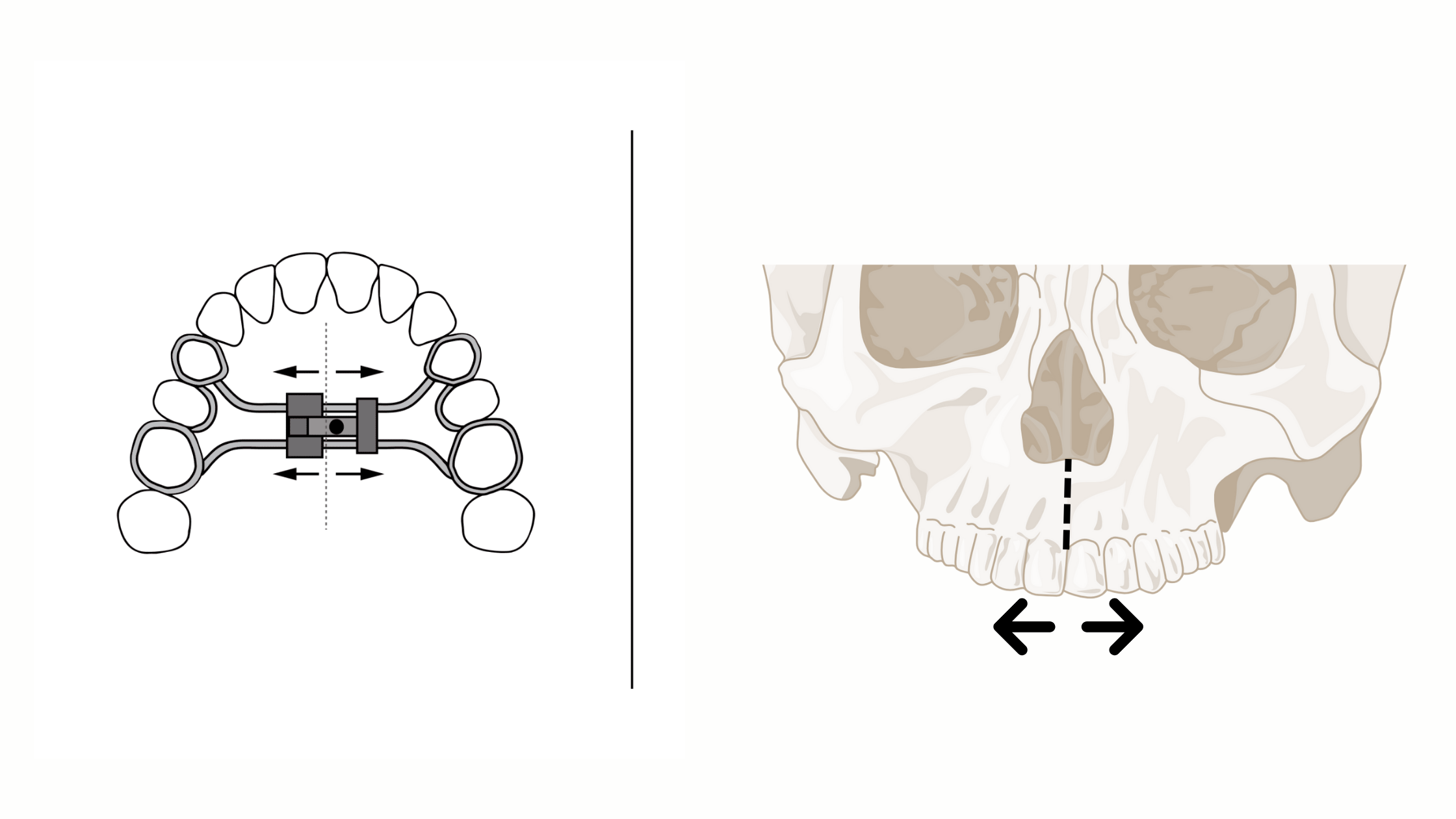
How can mouth breathing affect tooth alignment?
Mouth-breathers constantly have a low tongue posture. As the tongue exerts too much tension on the front teeth, it can lead to dental alignment problems, especially open-bite and cross-bite. These malocclusions are usually treated at the same time as the rehabilitation exercises.Other symptoms of mouth breathing
Other symptoms may include:- Red, inflamed, and bleeding gums.
- A dry mouth.
- Frequent cavities.
- Bad breath.
- Poor sleep, fatigue, and headaches.
- Speech problems: Difficulty making clear, easy-to-understand « S » and « Z » sounds.
- Digestive issues: Mouth breathers find it difficult to chew while breathing, resulting in maldigestion issues.
Aside from facial appearance, why is nasal breathing so important?
Nasal breathing plays an essential role in thermoregulating the air and clearing it of dirt and dust particles. This way, the air that reaches the lungs will be cleaner, warmer in cold weather, and cooler in hot weather.In addition, the paranasal sinus naturally produces a gas called nitric oxide. It dilates the blood vessels and allows better oxygenation of the body. It then contributes to a better recovery and quality sleep.
Conclusion:
The treatment of facial deformities caused by mouth breathing involves different medical specialties.Tongue posture and nasal breathing are essential to promote harmonious facial growth, especially in children.
Orthodontic treatment can use the remaining growth potential to widen the upper jaw and bring the lower jaw forward, thus fixing the long-face syndrome. However, in adults who have completed their growth, maxillofacial surgery may be the only remaining option.
Note that the earlier the treatment, the easier and more effective it is. If you are concerned about your mouth breathing, talk to your dentist about your treatment options. They may refer you to an orthodontist who will guide you through the treatment process.
- Effectiveness of Dental and Maxillary Transverse Changes in Tooth-Borne, Bone-Borne, and Hybrid Palatal Expansion through Cone-Beam Tomography: A Systematic Review of the Literature https://www.ncbi.nlm.nih.gov/pmc/articles/PMC8003431/
- Could nasal nitric oxide help to mitigate the severity of COVID-19? https://www.ncbi.nlm.nih.gov/pmc/articles/PMC7200356/
- Surgical approach of a vertical problem: the long face syndrome https://pubmed.ncbi.nlm.nih.gov/6587532/
- Quad-helix appliances may be more successful than removable expansion plates at correcting posterior crossbites https://pubmed.ncbi.nlm.nih.gov/25909939/
- Guidelines proposal for clinical recognition of mouth breathing children https://www.ncbi.nlm.nih.gov/pmc/articles/PMC4593528/
- A systematic review concerning early orthodontic treatment of unilateral posterior crossbite https://pubmed.ncbi.nlm.nih.gov/14580028/
- “Parts of the figure were drawn by using pictures from Servier Medical Art. Servier Medical Art by Servier is licensed under a Creative Commons Attribution 3.0 Unported License (https://creativecommons.org/licenses/by/3.0/).”